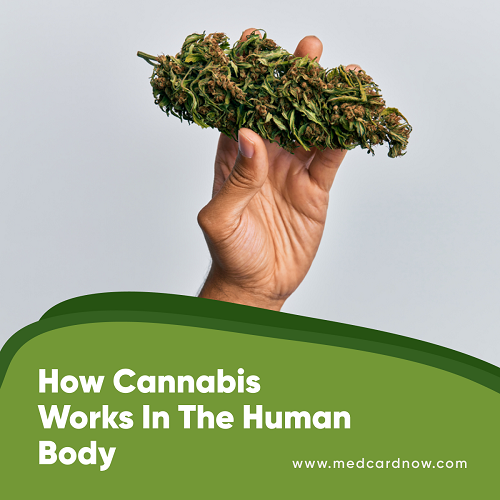
Cannabis is gaining a lot of traction in the world, but what is it doing in your body? How does cannabis work in your body? Let’s take a deep dive and then we’ll come to know how cannabis works .
Understanding Cannabis
Cannabis works in the body by interacting through an extensive network of receptors we call the endocannabinoid system (ECS). The human body generates its neurotransmitters similar to tetrahydrocannabinol (THC). THC binds with receptors in our brain and other areas in our body to produce a psychoactive high.
The discovery of the ECS in the early 1990s leads to one of the most important physiological systems in our body. The ECS shows that there are endocannabinoid receptors in almost every organ including the brain. The brain also has the highest amount of endocannabinoid receptors than all the other neurotransmitter receptors.
It’s good to the importance of the ECS and its role in several ailments because it can be useful in treating several ailments.
The different ECS receptors
There are two primary cannabinoid receptors.
The CB1 receptors
The CB2 receptors
The CB1 receptors
The CB1 receptors are in abundance in the brain and central nervous system. The CB2 receptors are abundant outside the nervous system, primarily in the immune system.
The CB1 receptors play a role in reducing pain, nerve inflammation, and degeneration. They also regulate metabolism, appetite, bone mass, memory, and heart function.
The CB2 receptors
The CB2 receptors regulate allergic and autoimmune conditions. They also regulate inflammatory and neurodegenerative diseases, osteoporosis, chronic pain, and stress reactions.
The ECS works in the body by maintaining a state of balance known as homeostasis. It can also restore the body from abnormalities in neurotransmitter levels, inflammatory processes, or metabolic disorders. The body uses the ECS system to regulates pain, mood, sleep, appetite, and other bodily functions.
The body produces two primary endogenous cannabinoids, anandamide (AEA) and 2-arachidonoylglycerol (2-AG). These endocannabinoids work by interacting with our CB1 and CB2 receptors. These receptors are in all parts of the body, and they work to control the body’s essential functions.
What Happens When You Consume Cannabis?
Cannabinoids enter your body through the bloodstream before entering other bodily parts. When you smoke cannabis, THC and other cannabinoids move straight to your lungs or the alveoli. The large surface area of the alveoli makes it easy for THC and the other compounds to enter the body. The lungs easily absorb cannabis smoke and in this way Cannabis works its process.
Phytocannabinoids like THC and CBD easily attach to the CB1 and CB2 receptors. This prevents endogenous cannabinoids such as anandamide from binding to the receptor sites. This results in a feeling of euphoria and blissfulness. These effects are common among cannabis consumers. However, the actual effects depend on which strain you consume, the terpene, and the cannabinoid profile.
Bottom line
Cannabis works in each human body differently. Everyone’s endocannabinoid system is unique and that’s why cannabis affects everyone differently.
To live a healthy lifestyle ensure to pay attention to your endocannabinoid system. It’s good to supplement cannabis to ensure the proper functioning of your endocannabinoid system.



